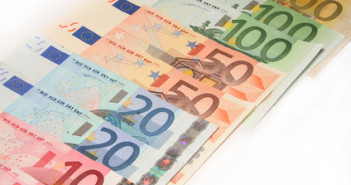The bond buying program of the European Central Bank is entering its fourth week. Towards the launch of the program and during the first week, there were fears that the ECB would not have enough bonds to buy, that its goal of 60 billion per month was somewhat too ambitious.
Well, the latest weekly release shows that the central bank is certainly on track, with 41 billion euros under the belt, the money continues to flow, also outside of the zone.
Crunching the numbers
41 billion euros in 21 days means nearly two billion euros per days, which is around 60 billion per month. If we count working days, the results look the same: 41 billion in 15 days is around 60 billion in 21 working days.
Mario Draghi said that the lower rate for bond yields is the negative deposit rate that the Bank set: minus -0.20%. In some countries and for some maturity lengths, these bonds are already out of reach for his institution. This is relevant for single digit German debt for example.
However, for longer maturities and for enough countries, there is plenty of stock out there. Adding Greek debt, once it happens, will not make a great impact, nor will keeping it out of the program.
We have learned that German inflation is lifting its head above 0% and we might see the same for the whole euro-zone probably later in the year. But yet again, Draghi insisted that the more optimistic forecasts his staff published fully depend on the implementation of the program: there will not be any let down anytime soon.
EUR/USD
What does this mean for the euro/dollar? The pair has already weakened significantly due to converging monetary policies by the ECB and the Fed. Some think it has gone too far and see the recent correction from below 1.05 to 1.1050 as a change of course for the world’s most popular currency pair.
However, with this flow of money continuing from Frankfurt, it is hard to see it all reach the real economy in a direct manner. Some of the money that the ECB crowds out of bonds goes into European stocks, some goes to lending to the real economy and some just goes out of the zone.
Those from outside who have invested in bonds can now take profits and leave. The extremely low interest rates in the euro-zone, a policy of the ECB of course, make the single currency the single funding currency as well.
Ball moves to the US court
At current levels of 1.08, the pair is still looking for a direction within the wide range it is trading in. From the euro side, the money keeps flowing. From the other side of the Atlantic, it depends on the Fed’s timing of the first rate hike and the pace of the hikes.
We will get another hint for that in the upcoming Non-Farm Payrolls release.
More: EUR/USD to parity by Q3 and to 0.95 by end Q1 2016 – Barclays
